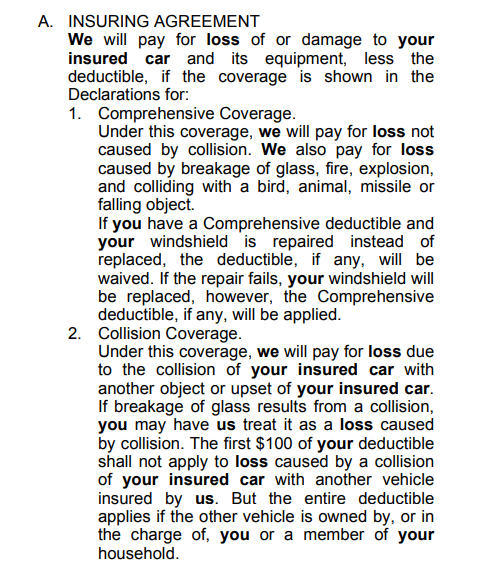Examine This Report on Pacific Prime
Table of ContentsAn Unbiased View of Pacific PrimeThe Of Pacific PrimeSome Ideas on Pacific Prime You Should KnowPacific Prime for DummiesPacific Prime Things To Know Before You Buy

This is due to the fact that the data were accumulated for a period of strong economic efficiency. Of the approximated 42 million people that were uninsured, just about regarding 420,000 (about 1 percent) were under 65 years of age, the age at which most Americans end up being qualified for Medicare; 32 million were adults between ages 18 and 65, around 19 percent of all adults in this age; and 10 million were children under 18 years old, concerning 13.9 percent of all children (Mills, 2000).
These price quotes of the variety of individuals without insurance are generated from the annual March Supplement to the Existing Population Study (CPS), conducted by the Demographics Bureau. Unless otherwise noted, nationwide price quotes of people without medical insurance and proportions of the populace with various type of protection are based on the CPS, the most commonly made use of source of quotes of insurance policy protection and uninsurance prices.
Not known Details About Pacific Prime
:max_bytes(150000):strip_icc()/basics-to-help-you-understand-how-insurance-works-4783595_final-9cf74d5b66d14f88a21ab29ddb290e2d.png)
Still, the CPS is especially useful because it creates annual estimates reasonably rapidly, reporting the previous year's insurance policy coverage approximates each September, and since it is the basis for a consistent collection of quotes for more than two decades, enabling evaluation of fads in insurance coverage gradually. For these factors, in addition to the substantial use of the CPS in other studies of insurance protection that are offered in this report, we depend on CPS estimates, with restrictions noted.

The quote of the variety of without insurance people increases when a populace's insurance coverage condition is tracked for several years. Over a three-year duration beginning early in 1993, 72 million individuals, 29 percent of the united state population, were without coverage for a minimum of one month. Within a solitary year (1994 ), 53 million individuals experienced at least a month without coverage (Bennefield, 1998a)
6 out of every 10 without insurance adults are themselves utilized. Working does boost the possibility that one and one's household participants will have insurance policy, it is not a guarantee. Also participants of families with two permanent breadwinner have practically a one-in-ten possibility of being without insurance (9.1 percent without insurance price) (Hoffman and Pohl, 2000).
4 Easy Facts About Pacific Prime Explained
New immigrants make up a significant proportion of individuals without health and wellness insurance. One analysis has actually attributed a considerable section of the recent growth in the dimension of the united state uninsured population to immigrants that showed up in the nation between 1994 and 1998 (Camarota and Edwards, 2000). Recent immigrants (those who involved the USA within the past 4 years) do have a high price of being without insurance (46 percent), yet they and their youngsters account for just 6 percent of those without insurance coverage across the country (Holahan et al., 2001).
The relationship between health insurance and accessibility to care is well established, as recorded later on in this chapter. The relationship between health and wellness insurance and health results is neither direct neither easy, a substantial professional and health and wellness services research literature links health and wellness insurance coverage to improved accessibility to care, much better top quality, and enhanced personal and population wellness status.
Levels of analysis for analyzing the effects of uninsurance. This conversation of medical insurance coverage concentrates largely on the U.S. population under age 65 due to the fact that virtually all Americans 65 and older have Medicare or other public protection. In addition, it browse around these guys concentrates specifically on those without any type of medical insurance for any type of size of time.
Indicators on Pacific Prime You Need To Know
The troubles faced by the underinsured remain in some areas similar to those faced by the uninsured, although they are usually less severe. maternity insurance for expats. Uninsurance and underinsurance, nevertheless, include clearly various policy problems, and the techniques for addressing them may vary. Throughout this study and the five records to comply with, the main focus gets on individuals without any medical insurance and hence no support in paying for healthcare beyond what is offered via charity and safety and security web establishments
Medical insurance is an effective factor impacting receipt of care since both individuals and physicians react to the out-of-pocket price of services - https://pacificpr1me.wixsite.com/my-site-1/post/pacific-prime-your-trusted-partner-in-international-health-insurance. Wellness insurance coverage, nonetheless, is neither required nor sufficient to get to clinical solutions. The independent and direct effect of health and wellness insurance policy protection on accessibility to health services is well developed.
Others will certainly obtain the healthcare they need even without wellness insurance policy, by paying for it expense or seeking it from companies that supply treatment totally free or at extremely subsidized rates. For still others, medical insurance alone does not make certain invoice of care as a result of various other nonfinancial obstacles, such as a lack of healthcare suppliers in their community, minimal accessibility to transportation, illiteracy, or linguistic and cultural differences.
The Best Guide To Pacific Prime
Formal research study regarding without insurance populaces in the USA dates to the late 1920s and very early 1930s when the Board on the Expense of Treatment generated a collection of reports concerning financing medical professional workplace check outs and hospitalizations. This concern ended up being salient as the numbers of clinically indigent climbed throughout the Great Depression.